You would likely have used a Kullu shawl or a scarf sometime in the winter. We feel that the Kulvi weave symbolises the mystery of Himachal Pradesh. A bit of that was demystified during our recent tour of the Bhuttico weaving centre in Kullu. They have presented the weaves of Himachal Pradesh to the common consumer as well as to the high-end fashion ramp.
Our last trip to Naggar in Himachal Pradesh was a culture trip through Kulvi or Kullu way of life. We stayed at Naggar, once the capital of Kullu. We were introduced to many aspects of the traditional lifestyle in this zone. This included food, music, clothing, weaves, weaving industry a.k.a. Bhuttico in Kullu. Bhuttico is a cooperative society of weavers in the Kullu region of Himachal. They primarily weave shawls and fabrics for further stitching.
Contents
Weaves and art forms of Himachal Pradesh
Himachal Pradesh has been mentioned in ancient texts. In fact, the Chinese traveller Hiuen Tsang visited Kullu. He wrote eloquently about their culture and temples.
Given the antiquity of the Kullu culture, it behoves that this region would be rich in crafts. Himachali or Kulvi caps, brass repousse God-faces or Devta masks, poolan or embroidered slippers, and of course, Kullu shawls are beautiful handmade items from this area.
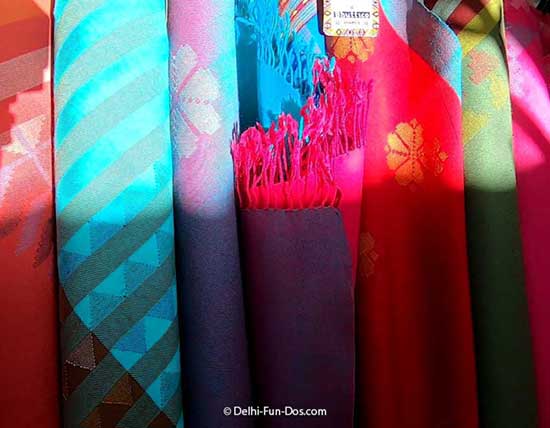
Among the handloom and handicrafts of Himachal Pradesh, the Kullu shawls are the most popular items. They are not only functional but bear an understated elegance. These shawls are very popular among locals and visitors. No wonder any market in the Kullu region, especially Manali and other tourist spots would have a few shops selling Kullu shawls.
While a Kullu shawl is a hugely functional souvenir to buy from Himachal, given their popularity, fake Kullu shawls have inundated the market. The traditional handloom shawls have given way to cheaper machine-made items. Many of these are not even manufactured in Himachal Pradesh but are supplied from Ludhiana in Punjab.
Such fake shawls not only cheat the hapless customer but also spoil the market for the real weaver. Moreover, Kullu shawls are registered as a GI under The Geographical Indications (GI) Act. Hence a machine-made Kullu shawl is a violation of the GI Act as well. If you are not sure about the authenticity of the Kullu shawl, we suggest you buy it from the co-operative society stores of Bhuttico.
Also watch:
Bhuttico in Kullu
A cooperative society is a joint ownership of an enterprise where the stakeholders work for their common goals and needs. Bhuttico is a cooperative society that is engaged in weaving of Kullu shawls and fabrics. Along with shawls, stoles, and fabrics, they also sell stitched items like Kullu caps, Bhuttico Nehru jackets, coats, etc. The products are sold from more than 35 stores all across India. Bhuttico online store carries shawls, stoles jackets, sweaters, and fabrics as well.
The administrative office as well as their chief weaving centre and showrooms are located at Bhutti Colony, Shamsi in Kullu.
Bhuttico History
The cooperative society movement in India started in the pre-independence era. Many artisans from handloom and handicraft sectors created co-operatives for their livelihood as well as to maintain and forward their skills. Traditional weaving in Himachal Pradesh was mostly about creating the pattu, a long fabric that is draped around the body by Himachali men and women. These woolen garments would have simple checks on the body designs on the borders and elaborate designs on the edges.
Bhuttico was formed pre-independence by the late Thakur Ved Ram in the year 1944. The goals were to nurture local skills and generate employment. The aim was to simplify the elaborate pattu in a more widely usable design. Thus the size of the pattu was modified to create shawls and stoles. Further, the elaborate designs on the borders and edges were simplified to make commercially viable products. Consequently, the original pattu is now converted into shawls in varying sizes for men and women, stoles, scarves, and running fabrics. The borders are also woven and sold separately for attaching to other garments.
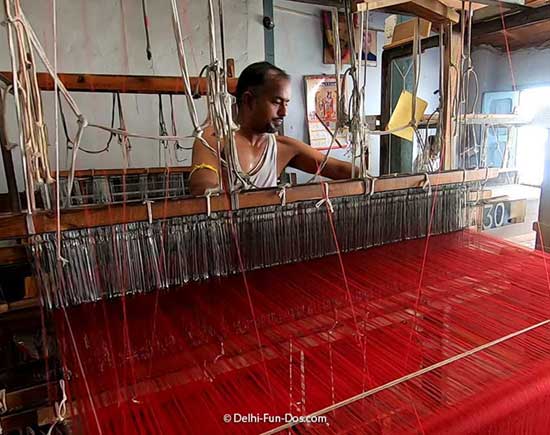
Over time, Bhuttico has emerged as the largest organised sector or Himachali weavers. Their trusted products are sold far and wide. They also produce bespoke shawls and fabrics on commission and supply to designers.
How is the Kullu shawl made in Bhuttico Weaving Centre?
We visited the Bhuttico weaving centre recently. We sought permission from their Public Relations Officer and were given a tour inside. Seeing their high standards of quality control at every step was a learning experience. Their storage had countless varieties and thicknesses of wool, segregated as per the plies, dyes, and natural ones. Every component of raw material was classified in an organised manner.
Thereafter we saw the weaving area. The charkhas (spinning wheels) here surprised us. Apparently, some of the yarn was handspun here on these charkhas. This zone led to many long halls that were lined with looms. These looms were worked with hands and feet. Most looms were occupied by weavers and these rooms produced a cumulative “kat-a-kat” sound, quite in rhythm. The warp and weft were fitted with yarn in many subdued or bright colours. The weavers deftly used their fingers to create a design before it was finely woven with the movement of the loom.
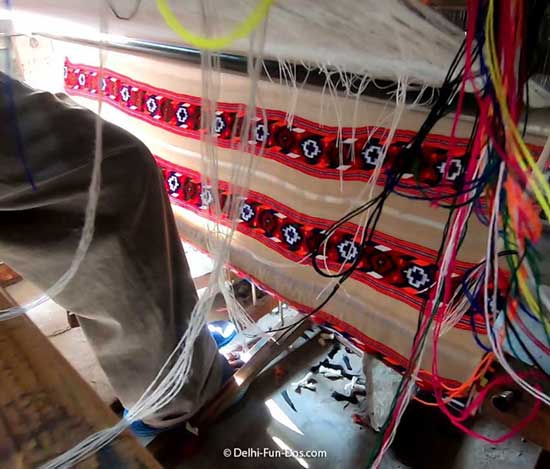
We have used Himachali shawls and stoles many times before. In fact, we have shopped from Bhuttico outlets from Delhi as well as Shimla. Yet, coming to the source and seeing the sweat and toil behind our items of clothing gave us goosebumps.
What is the fabric of Himachal Pradesh shawls?
Himachali shawls or Kullu shawls are mainly made of wool. Merino wool, Angora wool, and local sheep wool are used singly or in combination to create an item. Bhuttico products bear the Woolmark, an international certification system that certifies that a certain item has been made as per their exacting standards of wool.
Who weaves Kullu shawls?
Kullu shawls are traditionally woven by indigenous Kulvi people. The concentration on weavers in Bhutti Colony is high. Thus the co-operative society is called Bhuttico. Along with weavers from Kullu, craftsmen from Bushahr in Rajasthan came to Kullu and wove Kullu shawls.
Bhuttico provides weavers with raw materials based on the items and their designs. The weavers then use Bhuttico’s facilities to complete the weaving. A few weavers, especially women in nearby areas, carry the raw material back and weave at home. They deliver the finished goods to Bhuttico.
Kullu shawl motifs
The Kullu region of the Himalayas is traditionally cold throughout the year. Winters are even harsher. In the yesteryears, because of the limited road network and heavy snow, this region was often cut off from the plains. It was therefore the need of the times that Kulvi people started having pit looms at home and wove Pattus to protect themselves. In other words, Kullu shawls were originally functional garments to protect the people of this part of the Himalayas during harsh winters. Due to the interest of the British officers in this region in Kullu shawls, these items started being produced commercially, and designs were introduced.
Kullu shawls were originally woven in the natural colours of wool. Hence, these were mostly beige, brown, grey, and black. In later years, bright colours were introduced into the patterns to make the shawls attractive. Yellow, pink, red, green, and blue are common colours used to decorate a lighter base. Pastel shades have been introduced in keeping with modern times.
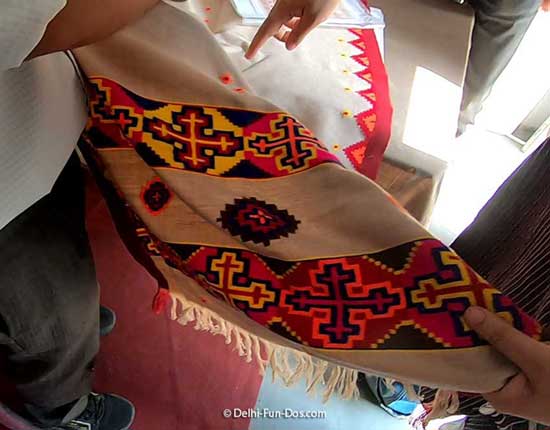
Traditionally Kullu shawls bear geometric motifs. The motifs are woven in the Jamdani style. The edges of the shawls, stoles, and scarves bear dense patterns. The bodies sometimes have sparse floral decorations to balance the heavier edges.
Kullu shawl design influence
Kullu shawl designs are inspired by patterns in local temples and palaces. In later years, craftsmen from Bushahr, which is located at the Tibet border, brought Tibetan and Central Asian influences to the Kullu weaves.
We had an opportunity to visit the design centre at Bhuttico. While we love their traditional geometric patterns, we were pleasantly surprised to see motifs like peacocks, etc now being created on these shawls. Bhuttico is now collaborating with designers and students from the National Institute of Fashion Technology (NIFT) and the National Institute of Design (NID) to create contemporary stylish pieces worthy of ramps of fashion shows. These premium designs were also available at their store here.
Why choose Bhuttico products
The Bhuttico weaving centre also had Bhuttico Stores selling the items woven here. These items included shawls, stoles, scarves, tweeds, and the Himachali pattu. They also carried stitched items like jackets, sweaters, and of course, the iconic Himachali cap.
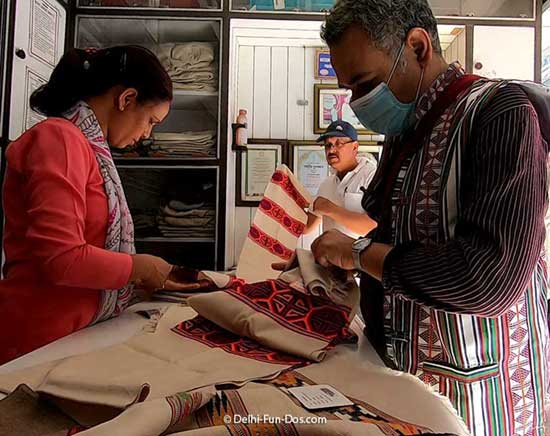
We bought souvenirs such as shawls for ourselves. For friends and family, we carried pure wool scarves and the colourful Himachali topi. The prices were most reasonable. Most important, we did not have to worry about buying spurious items. We were also glad that we could contribute, in some little way to this cooperative society movement that is definitely a pride of India.
Closing Thoughts
While we love supporting Indian handloom and handicrafts, this trip to the Bhuttico Weaving Centre Kullu, was a surprise. It was much more than shopping. It was an eye-opener in dedication and meticulousness. Bhuttico was working for the welfare of local weavers, the survival and advancement of Kulvi weave, and providing consumers with authentic products. In other words, Bhuttico is a win-win situation, no less!

Thank you Mr. Dinesh Thakur, Export Manager, Bhuttico for taking time out and giving us such an informative trip. Last but not least, we can’t thank Mr. Praveenji of Kohinoor Heritage Resort, Naggar enough for taking us to Bhuttico and arranging the tour for us.

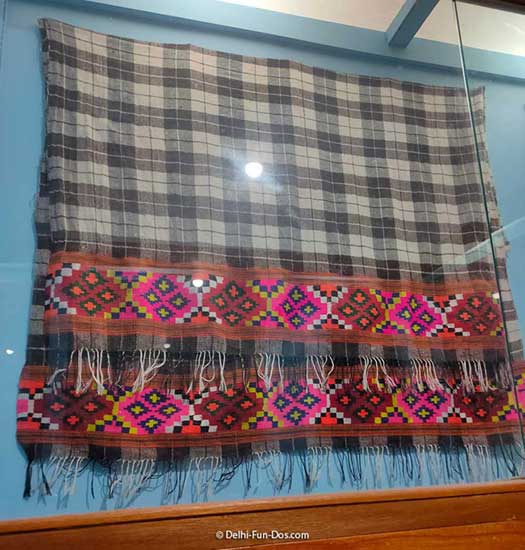
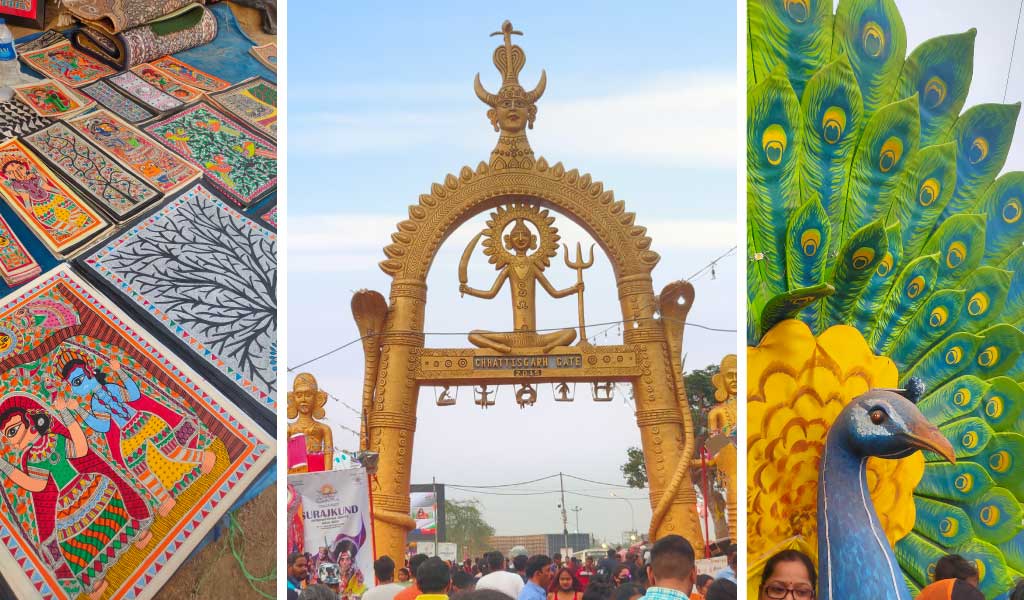
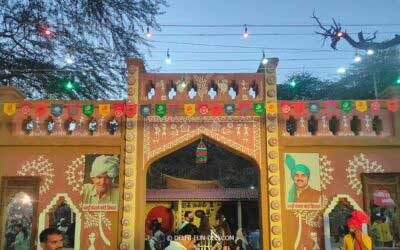
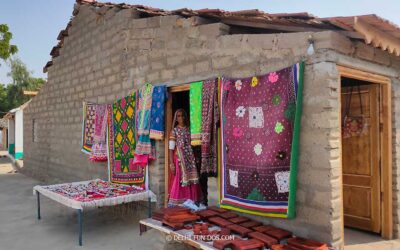
Your recent tour of the Bhuttico weaving centre in Kullu reminded me of a similar tour I had in Palampur. What fun it is to watch the weaver create a piece of art in front of your eyes! And the best part is you can buy if you like what you see!
Yes, any creation is a miracle.
Thanks for your post that now I am planning a trip to Kullu. I am definitely visiting the Bhuttico weaving centre to see the process and buy some of these amazing fabrics if I can.
Look forward to reading your views.
Definitely, I loved buying Kullu caps many years ago. I will make sure I buy a few more when I visit here.
Kullu caps are a fashion statement.
I am going to go ahead and bookmark this post for my sister for the research project for school. This is a sweet site by the way. Where did you obtain the design for this website?